Curating art for the home: Joanna Wood shares her career highlights
September 28, 2017
Joanna Wood is an interior designer, entrepreneur and business owner, who has been running a luxury design practice for over 30 years. We interviewed her to learn more about her experience, advice and opinions on art for the home. How to buy it, how to display it and how it can change the look and feel of a room.
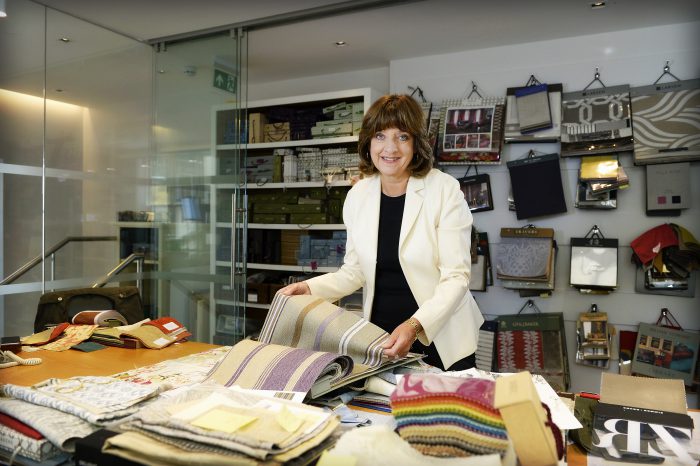
“I am the least academically qualified person in my office, but far and away the most experienced.”
Joanna tells us, laughing. We’re sat in her eclectic Victoria office, surrounded by countless books of fabrics, resisting the urge to rifle through the materials paired and spread across the table.
“I trained underneath a very talented designer and architect called Alana Dowling, at Asprey on Bond Street. Very early on, in my mid-twenties – when I had more optimism than experience – I set up my own business in the spare bedroom of my flat. Since then, it’s grown and grown and grown.”
From the humble beginnings of her home office, Joanna Wood has cultivated a design pedigree which few could question.
She’s done work for The Crown Estate, and for The All England Tennis Club at Wimbledon; runs a retail shop with a furniture showroom in Belgravia, and has two design companies: Phillips & Wood and Lewis & Wood – designing fabrics, furniture and lighting, respectively. As she observes, “It’s enough to keep a girl busy!”
On art
Designing the dwelling-places of the affluent and successful means that Joanna has worked with some of the most famous art in the world. But although she has designed with pieces as well-known as Damien Hirst’s sheep in formaldehyde (“We ended up putting it on a little lobby in the staircase with the most amazing lighting on it. So, you came up the stairs and there it was!”) it’s not always necessary to spend millions to find something you love.
“I say, if you take a collection of pebbles off a beach and put them into a Perspex box and you light them beautifully, then that’s art.” Joanna tells us “We are not a brand led practice which is why we work across such a broad spectrum of art. We translate the client’s look – we do not sell them a particular look. Quite a lot of designers are like “This is what we do, this is how it will look at the end of the day – this is the box.” What we do is design the box to suit specific backgrounds.”
This is one of the most powerful things that comes across in our conversation – just how important the client’s personality, lifestyle and emotions are when designing a space. And equally, it’s often the art and the objects which define the design – not the other way around.
“The more I know about design and architecture the more I understand that all I am doing is designing to present the art and the art must always be the most important thing in the room. Everything we do is about the presentation of the client’s art or sculpture or porcelain… It’s not about the coffee table, it’s about the beautiful bowl on the coffee table.”
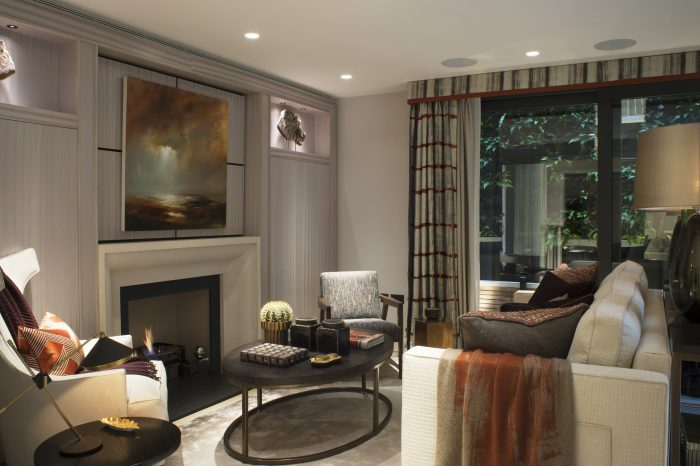
On decorating with art
Of course, pulling a room together around a piece, or a collection of art, requires a keen eye for detail. Tying your décor in with piece of art you simply can’t live without takes time and dedication.
“It’s actually a lovely thing to do – to decorate to art – because it gives you the opportunity to show off your scheme and to show off the client’s art. For example, we recently did a Turner that had a wonderful yellow sunset with blues, so the scheme was to go for those colours. Obviously if one had gone with red it would have looked horrible with it. We were picking colours from the piece to design to the room. “
However, if you are simply looking for a piece to work within a space, there are distinct advantages of working with an expert design practice. Beyond having an experienced eye to advise on what works of art will look good, professionals like Joanna can often try a piece in a space, before purchasing it.
“In the interior design process, we have access to everything. We can take stuff to the client rather than the client going to them. Some of our clients are super busy or living abroad, so we can go in and, on our reputation and on our insurance, we can transport pieces from galleries. That’s very important, especially if we’ve designed a house and are retrospectively buying art. Quite often that’s a good way of approaching it. If the client doesn’t have the art, and they don’t have x-ray vision, or the experience someone like me does – they prefer to see the space and then go ‘Okay, I want something that’s so big, by so big…’”
The idea of being allowed to hang a piece before committing to purchase is an attractive one. The 2017 Hiscox Art Trade report showed that for the third year running the conversion of online art buyers has remained static. The concerns of offline art collectors tend to focus around the lack of physical inspection, and misgivings about the work’s condition and authenticity. We asked Joanna what she thought about the online art market, and why there might be reluctance to move from the offline to digital.
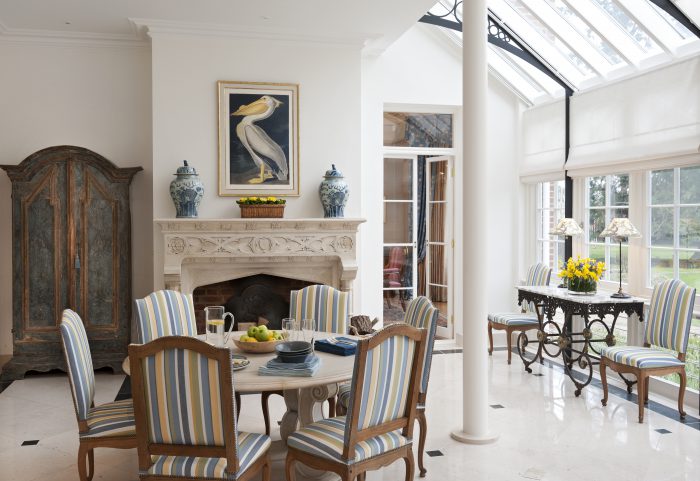
“I don’t think you can buy art on the internet. It’s too emotional.” Joanna explains to us, “I think you can buy photography on the internet, and I think you can buy porcelain, and the kind of pieces when you know what you’re buying. But if you’re buying a contemporary artist or an antique, I think you need to have an emotional bonding to the piece as a client. Although of course when some people are buying art for investment, if it’s a Picasso, it’s a Picasso, isn’t it! But I would always recommend that you’ve got to feel it emotionally. My recommendation is to touch and feel before signing the cheque.”
On buying art
For the budding art collector, or someone looking to reinvigorate their interiors with a new piece of art, it might seem easiest to rely on online platforms, but Joanna recommends the old-fashioned way, when it comes to art.
“Get on your feet and start visiting galleries. Start at the top. Start at Bond Street, Christies and Sotheby’s. Sales rooms are a very undervalued source, mostly because you’ve got to have the confidence to buy it yourself or with your designer or your advisor. But I like buying in the sale room. One of the reasons why is because the client does not perceive that the dealer is making a middle man cut. It is what the market value is and psychologically I think that’s quite important.”
And although art (and particularly art in the home) is quite a personal purchase, it’s unavoidable that if you’re planning to spend a sum of money on a piece, you might want a return on your investment. It’s tempting to imagine that by spending cash on ‘the next big name’ in art, you might make a fortune if your piece appreciates in value. But the reality, it seems, is quite different.
“A lot of people are buying art for future investment, which is a very difficult thing to do, especially out of current living artists.” Joanna explains, “It is almost a lottery – you may have spent 30, 40, 50, 100,000 pounds on a piece of work from a contemporary artist and five years later it is worth flumpance! Sometimes, with investment, it is better to be cautious and invest in an established artist.”
So, what’s Joanna’s advice when it comes to taking the leap, and buying a piece?
“I always say to people, ‘Whether you buy with your heart or with your head, always buy something you like.’ Don’t buy an investment piece because your art dealer says it’s an investment piece. Buy it as well because you love it and you want to live with it. That way you won’t go far wrong.”
At Hiscox, we share this passion for art and want to keep it alive in others. That’s why we offer specialist art collection insurnace to all clients taking out a high value home insurance policy with us. Our experience and understanding of the art market means we can offer beskpoke cover and a fast, discreet claims service.
You can find out more about Joanna and her work, by visiting www.joannawood.com. Or, you can follow her on Instagram, Twitter, and Facebook.

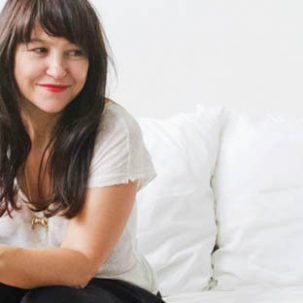



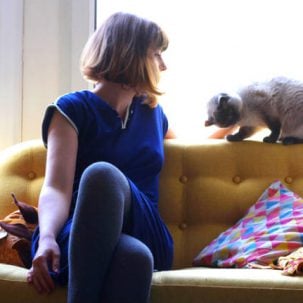
 Very satisfied with the service from Hiscox as always
Very satisfied with the service from Hiscox as always

